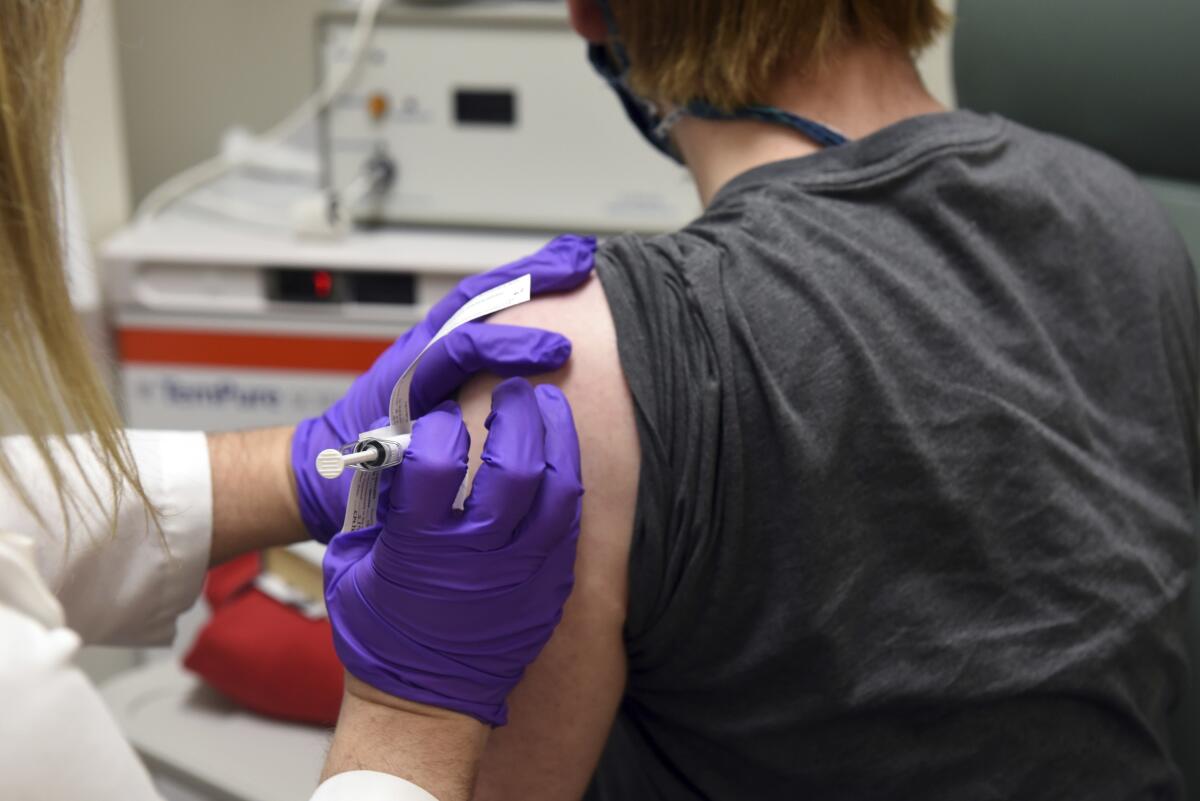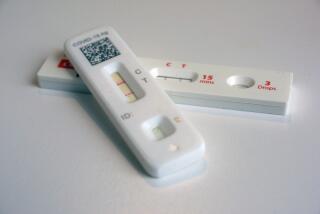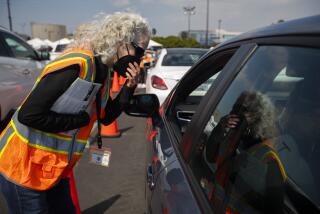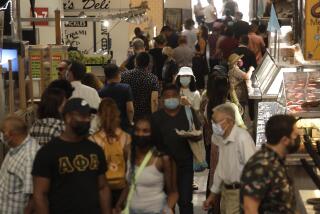Op-Ed: How I became a soldier in the fight against COVID-19

- Share via
I was feeling dejected and powerless in August when I typed my name and contact information into an online database for vaccine studies, hoping someone might want my help.
California was seeing its second COVID-19 pandemic surge, and my children had just learned their school wouldn’t reopen in the fall. My brother, a 37-year-old lawyer in San Francisco, had become severely ill with the coronavirus in March and was still struggling. And my mother, a longtime nurse at Los Angeles County-USC Medical Center, had fallen sick in April after examining a severely ill COVID-19 patient at her clinic for expectant mothers. “I guess I should update my will,” she told me during her two-week quarantine.
I had nothing except a functioning immune system to offer in the fight against the pandemic, but I figured it ought to be put to use.
It was. And after multiple blood draws, repeated self-swabbed coronavirus tests and two injections of either Pfizer’s experimental vaccine or a saline placebo, I was thrilled last week as the world celebrated preliminary news that Pfizer’s vaccine candidate looks as if it could be 90% effective in preventing COVID-19 infection.
This isn’t to say the study is over — far from it. The 44,000 of us participating in the drug company’s Phase 3 trial will continue to be tested, and we will keep track of our health for many more months. But for someone like me, whose immediate family has been greatly affected by the coronavirus, this can’t help but feel like a turning point. Finally, we may have a real chance to put behind us the hopelessness and dreadful mismanagement of the early pandemic and begin making steady progress, with new leadership and the promise of powerful new tools to use in the fight.
Progress toward a vaccine, rapid as it has been compared to the development of other vaccines, must seem frustratingly slow to those who have lost jobs, languished in isolation or put themselves at high risk on the front lines. But from my vantage point, the process has been reassuring. The trial has been run, as far as I can tell, painstakingly carefully and ethically.
At my initial screening to participate, I was interviewed, examined and made fully aware both of my rights and of all known risks. Of course, there are limitations to this process, considering I was taking part in a study partly aimed at discovering risks, but the sense that I got was that, if there were information to share, I would get it.
I got my first injection in September, and then I waited. I experienced nothing more than a sore arm, and two days later, I was clearing brush away from my mother-in-law’s cabin in the San Bernardino Mountains. The second shot, given three weeks later, was a different story. The day after receiving it, I came down with flu-like symptoms. They were unpleasant, but lasted less than 24 hours.
That was quite a contrast to what my brother went through. He described feeling as if his chest had been filled with concrete. His fever swung between low-grade and severe, and he experienced an unrelenting lethargy. That all may sound familiar today, but nine months ago his symptoms were unnerving. He survived, as almost all coronavirus patients do, but full recovery has been elusive. In September, when wildfire smoke smothered cities on the West Coast, he and his husband had to flee San Francisco to protect my brother’s fragile lungs.
I won’t forget those early days of the pandemic. I remember my mother tearfully describing the shortage of masks and other protective equipment at work. It felt like we were all waiting for the hammer to fall, and it wasn’t at all certain that the healthcare system could handle the volume of sick people likely to need care.
That fear hasn’t passed, especially now that most of the country is experiencing another surge in coronavirus infections and deaths. My children still sit in front of screens instead of in a classroom, and, like so many others, my wife and I work at home and strictly limit our contact with the outside world.
But after last week’s announcement, it finally feels like there is hope. In nondescript examining rooms in cities throughout the country, people with nothing but their time and immune systems to volunteer will continue quietly working to end this pandemic. I am immensely proud and grateful to be one of them.
Paul Thornton is letters editor of The Times.
More to Read
A cure for the common opinion
Get thought-provoking perspectives with our weekly newsletter.
You may occasionally receive promotional content from the Los Angeles Times.











